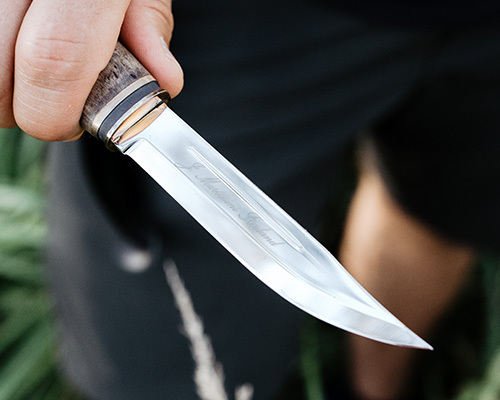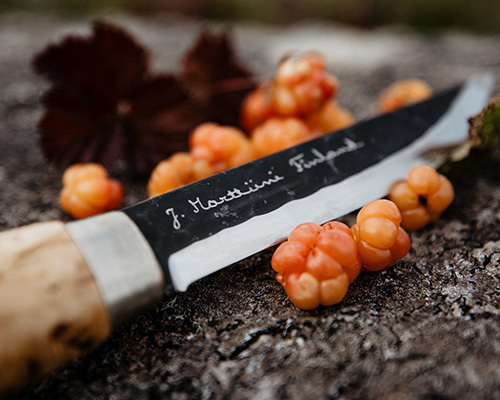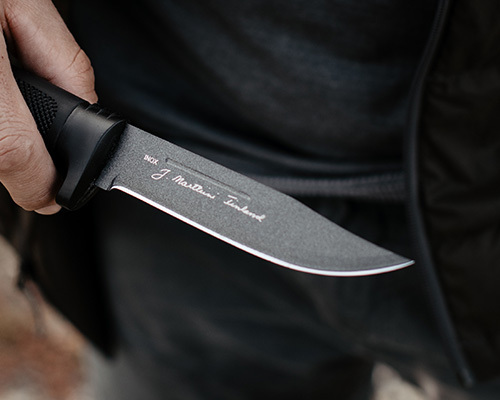MARTTIINI SHOP Use & Care Choosing your knife The Blade of the Knife
The Sharpest Edge
The manufacturing of a Marttiini blade is a demanding and time-consuming process. First a steel mass is rolled into a steel strip, out of which blade preforms are cut. The preforms are then tempered and cooledto the correct hardness.
The basis for the sharpness of a Marttiini knife is its machine ground sharpening angle. At Marttiini's factory a blade preform goes through various production phases before being ready for the final critical operation. This phase calls for extraordinary craftsmanship as at the final stage the blade is hand ground, giving it the famous Marttiini sharpness.
Although manufacturing knives is always based on solid old-school craftsmanship, there's a fair share of modern technology involved as well. Marttiini combines the latest automated technology and traditional hands on craftmanship in the manufacturing process, creating the renowned Marttiini quality.
Stainless chromium steelChromium steel is an easy-to-maintain and stainless-grade blade material the sharpness of the blade of which preserves for a long time. A typical portion of chromium in the steel alloy is 14%, and the blade hardness is HRC 53-55. In some models, we also use high-carbon stainless steel, where the chromium content is 13-18% depending on the alloy. Depending on the model, these blades are tempered to hardness HRC 52-58. Chromium steel can also, for example, be coated with a Martef coating. Sharpening of chromium steel can be done with a diamond sharpener. Read more. |
Carbon steelThe carbon steel blade is especially suitable for carving and is also easy to sharpen to its original sharpness. The regular carbon steel (Cr 0.3%; C 0.75%) has a hardness of HRC 55-57. We also use forged carbon steel (Cr 0.6%; C 0.84%) which is tempered to the hardness HRC 59.5. It is important to dry it thoroughly after use when caring for a carbon steel blade. It is also good to treat it regularly with salt-free oil, e.g., food oil. Carefully handled carbon steel steels remain rust free and has a very long service life. |
DamascusThe Damascus blade is produced by combining two different steel grades (Cr 14% and 18%; C 1.05% and 0.6%) in thin layers. The blade has 120 layers which are embedded to each other under high pressure at high temperature. The result is a very nicely textured, stainless, and very hard (HRC 60) blade that stays sharp for a long time.
|
Martef steel coatingThe dirt and moisture repellent Martef coating reduces friction to almost none. Thanks to the coating, the blade moves very smoothly in the material to be cut. Cleaning the Martef coated blade after use is very easy. Martef coated blades are made of stainless chromium steel. |






